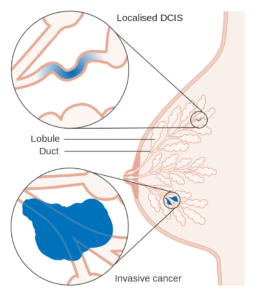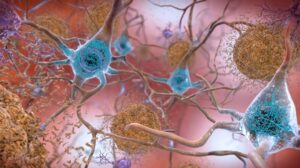Nobel Prize 2021 for Physiology and Medicine

Dr. S. Banerjee, PhD; Neucrad Health Desk, Oct, 2021
Our ability to sense temperature and pressure through the nervous system is crucial in our understanding, interacting and adapting with the external as well as internal environment. Fascinatingly, the Nobel Prize in Physiology or Medicine for the year 2021 has been awarded to David Julius and Ardem Patapoutian for discovering the long-sought molecular transducers involved with detection and conversion of heat/cold (temperature) and touch (pressure/mechanical force) into nerve impulses. Let’s try to understand their research discoveries through this article.
TRPV1 for thermosensation and heat-induced pain
It’s already known that sensory nerves and ion channels play role in the burning sensation and head sweating produced by the active component of chili peppers i.e., Capsaicin (8-methyl-N-vanillyl-6-nonenamide) when consumed. David Julius utilized capsaicin to further explore:
- If the ion channels are the actual transducers of thermosensation and heat-induced pain, and
- To identify those specific transducers.
Interestingly, Dr. Julius discovered TRPV1 ion channel’s key role to confer sensitivity towards pain generated by the hotness of capsaicin. Furthermore, Dr. Julius found that the activation threshold TRPV1 is close to the psychophysical threshold for thermal pain (above 40°C). This ground-breaking discovery of TRPV1 as the transducers of thermosensation and heat-induced pain further helped to pave way for identifying more temperature-sensing TRP channels.
Role of TRPM8 for the Cold sensation
Menthol is a natural compound that gives sensation of coolness in humans. The research labs of David Julius and Ardem Patapoutian independently discovered the key role of another member of the TRP superfamily in the transduction of thermal information in the somatosensory system. They found that TRPM8 acts as a key cold sensitive receptor that gets activated by low temperatures (harmless cold). This discovery also aided in the identification of additional TRP channels responsible for thermal sensation and in providing deep insights for future ion channel researches.
PIEZO as the Vertebrate Mechanosensitive Ion Channel

Membrane depolarization occurring upon the mechanical stimulation of frog’s cochlear hair cells already indicated the presence of vertebrate mechanosensitive ion channels long ago. However, specific mammalian receptor was unknown till Ardem Patapoutian from Scripps Research (California) discovered the role of PIEZO proteins as excitatory ion channels directly gated by mechanical force. By gene silencing 72 candidate genes one by one on an intrinsically mechanosensitive cell line, i.e., Neuro2A, Patapoutian found that knockdown of the FAM38A gene corresponding to protein PIEZO1 (Greek word “piesi” meaning pressure) could successfully eliminate mechanically-activated currents. PIEZO2, the second mechanosensitive channel was subsequently discovered whose loss of-function mutations in humans display profound deficits in touch sensation, tactile and vibration sensitivity, etc. This research works on the molecular basis for mechanosensation has revolutionized the field of neuroscience. PIEZO proteins are novel class of vertebrate mechanosensitive channels and Patapoutian and others has revealed that the high-resolution structure of PIEZO1 and PIEZO2 is homotrimeric with a central ion conducting pore and three peripheral large mechanosensing propeller-shaped blades. Interestingly, the three blades curve out and up on the cell membrane surface and when a mechanical force is applied to the membrane, the curved blades via some unknown mechanism flatten out thus exposing the central pore.
Relevance of 2021 Physiology or Medicine Nobel prize for Mankind
The ground-breaking discoveries of the novel role of TRP and PIEZO fetching this year’s Nobel prize has not only opened up new paths for exploring the role of ion-channels in relation to human transduction of temperature, pain, touch, proprioception but also in treating patients with disease conditions that includes chronic pain. For example, PIEZO2 has an important role in tactile allodynia and PIEZO2 deficiency has been found to significantly attenuate proprioception, and sense of failure to develop sensitization and painful reactions to touch following skin inflammation. However, more extensive research is required to actually know how medical world can manipulate with the channels and receptors to effectively and safely treat human patients.
References:
- Burki T. An interview with the Nobel Prize 2021 winners. Lancet. 2021 Oct 16;398(10309):1392-1393. doi: 10.1016/S0140-6736(21)02236-4. PMID: 34656215.
- https://www.nature.com/articles/d41586-021-01283-6
- Caterina MJ, Schumacher MA, Tominaga M, Rosen TA, Levine JD, Julius D. The capsaicin receptor: a heat-activated ion channel in the pain pathway. Nature. 1997 Oct 23;389(6653):816-24. doi: 10.1038/39807. PMID: 9349813.
- Coste B, Mathur J, Schmidt M, Earley TJ, Ranade S, Petrus MJ, Dubin AE, Patapoutian A. Piezo1 and Piezo2 are essential components of distinct mechanically activated cation channels. Science. 2010 Oct 1;330(6000):55-60. doi: 10.1126/science.1193270. Epub 2010 Sep 2. PMID: 20813920; PMCID: PMC3062430.
- McKemy, D., Neuhausser, W. & Julius, D. Identification of a cold receptor reveals a general role for TRP channels in thermosensation. Nature 416, 52–58 (2002). https://doi.org/10.1038/nature719
- Liao, M., Cao, E., Julius, D. et al. Structure of the TRPV1 ion channel determined by electron cryo-microscopy. Nature 504, 107–112 (2013). https://doi.org/10.1038/nature12822









